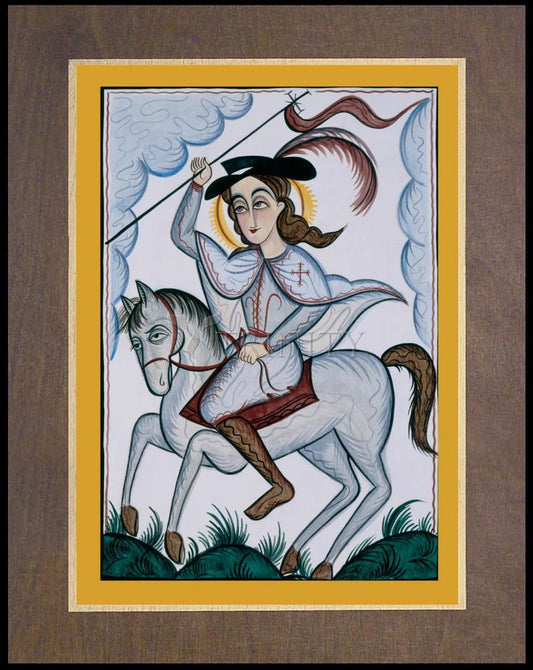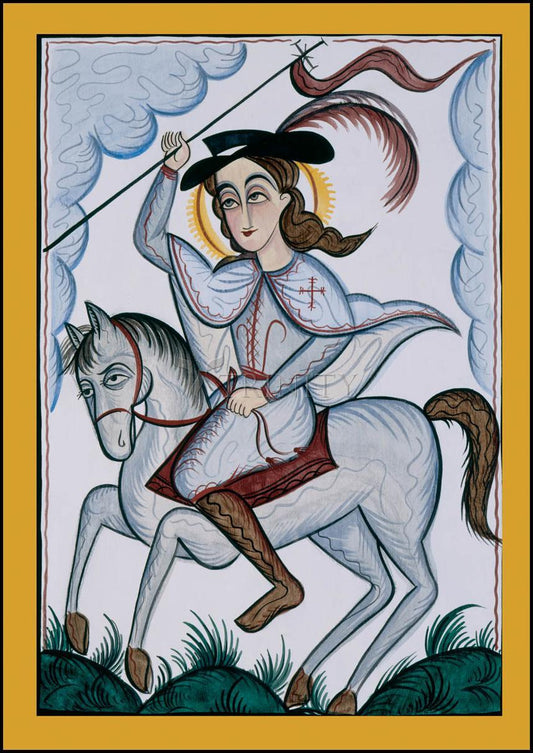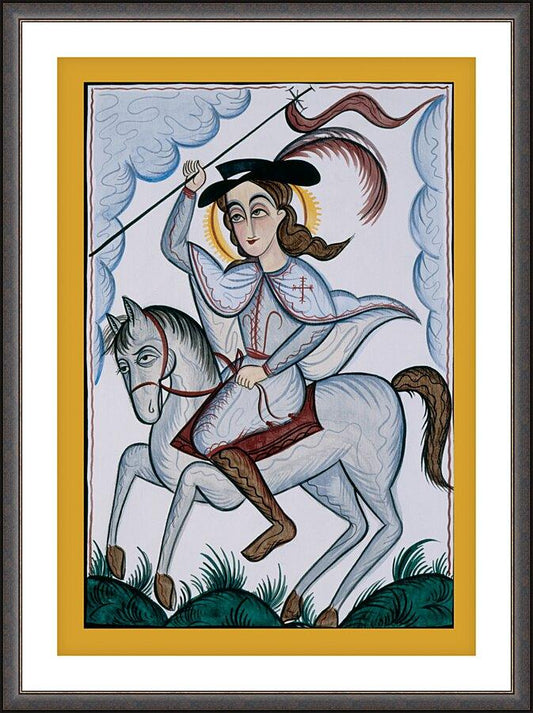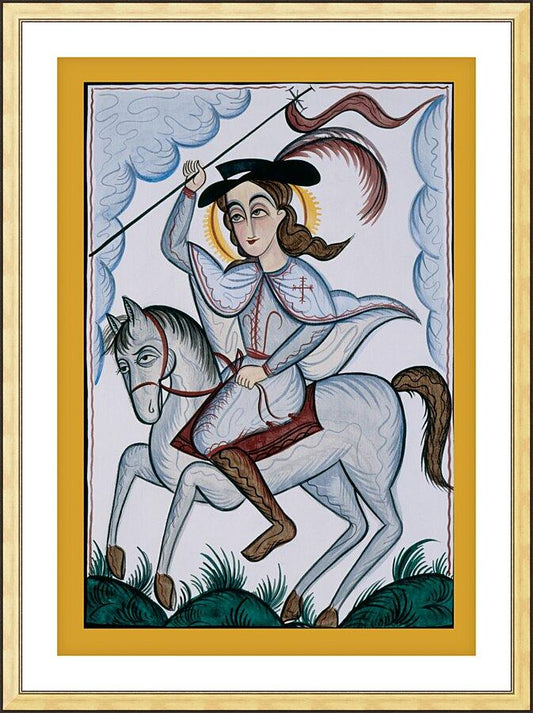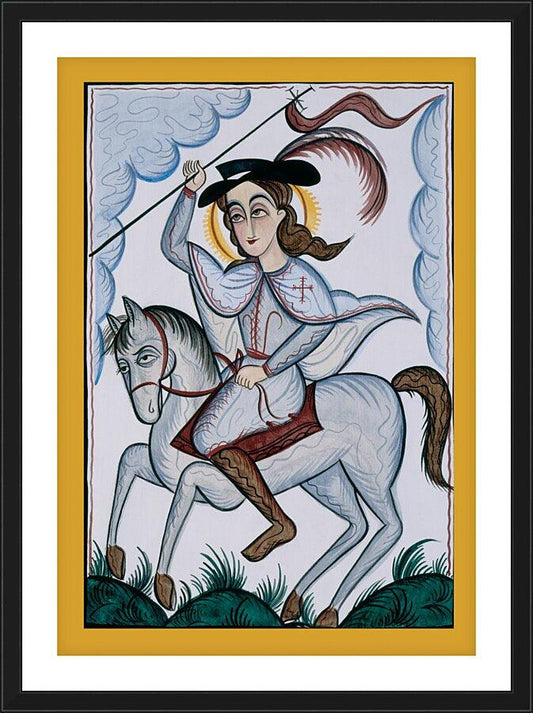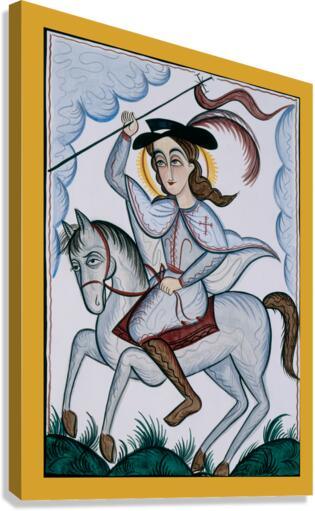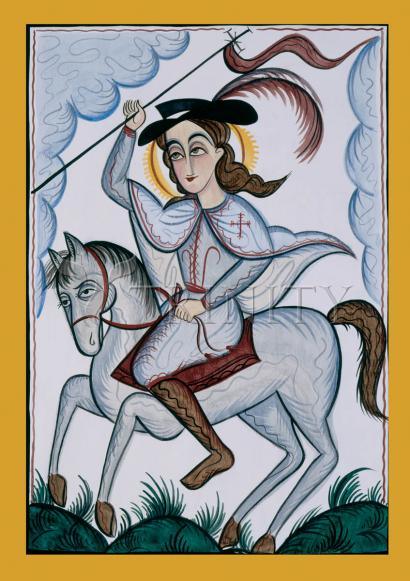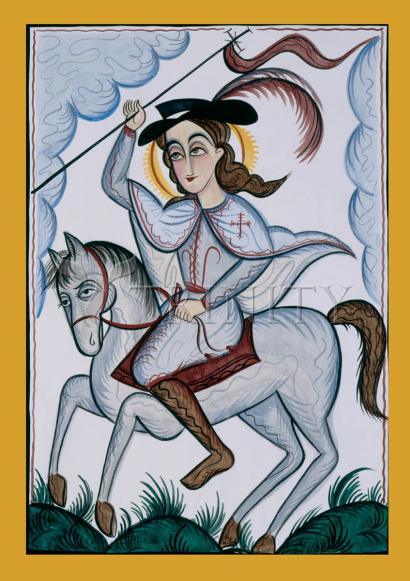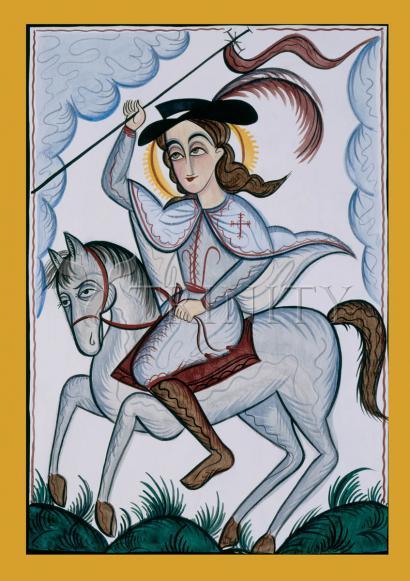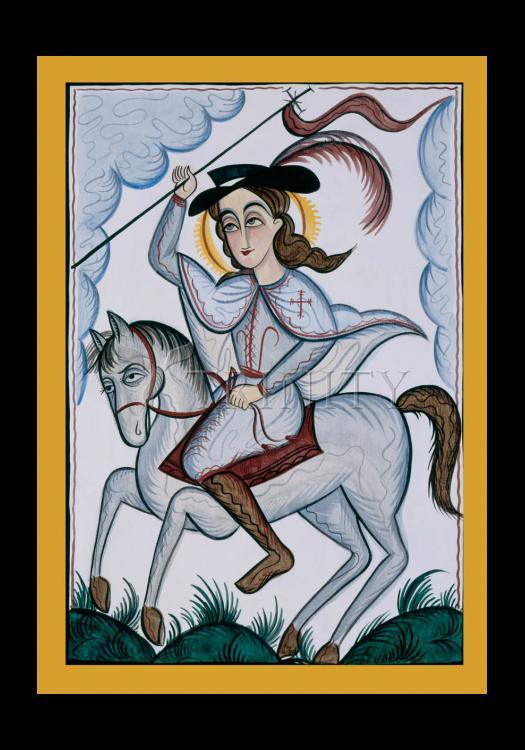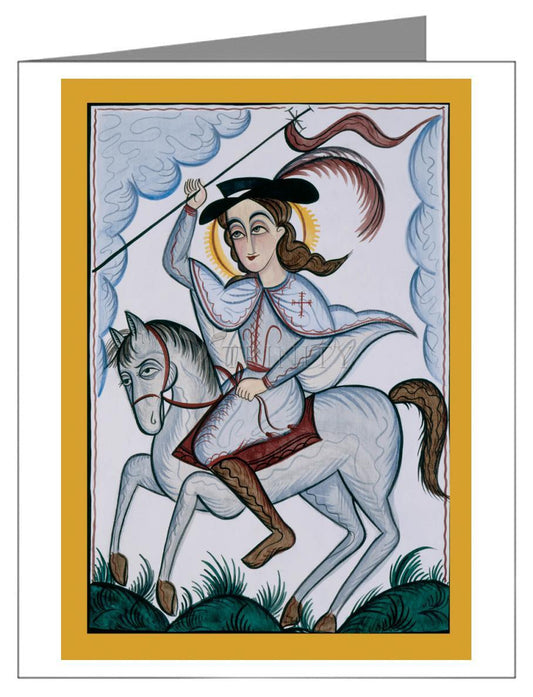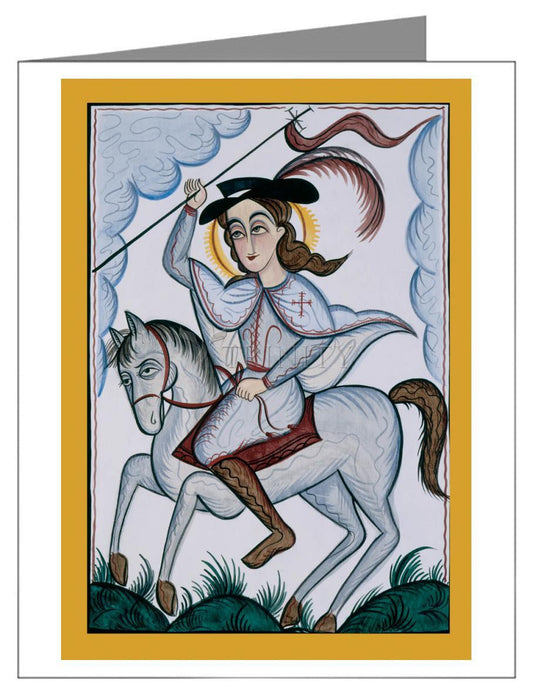James was the son of Zebedee and Salome, brother of St. John the Apostle, and may have been Jesus' cousin. He is called "the Greater" simply because he became an Apostle before St. James the Lesser. James was apparently a disciple of St. John the Baptist. Fisherman. He left everything when Christ called him to be a fisher of men. He was present during most of the recorded miracles of Christ. James preached in Samaria, Judea, and Spain. He was the first Apostle to be martyred.
The pilgrimage to his relics in Compostella became such a popular devotion that the symbols of pilgrims have become his emblems, and he became patron of pilgrims. His work in Spain, and the housing of his relics there, led to his patronage of the country and all things Spanish; for centuries, the Spanish army rode to battle with the cry "Santiago!" "St James!"
Like all men of renown, many stories grew up around James. In one, he brought back to life a boy who had been unjustly hanged, and had been dead for five weeks. The boy's father was notified of the miracle while he sat at supper. The father pronounced the story nonsense, and said his son was no more alive than the roasted fowl on the table; the cooked bird promptly sat up, sprouted feathers, and flew away.
Died: 44 at Jerusalem; stabbed with a sword by King Herod Agrippa; legend says his body was taken by angels, and sailed in a rudderless, unattended boat to Spain where a massive rock closed around it; relics at Compostella, Spain
Also known as: One of the Sons of Thunder; Jacobus Major; Iago; Santiago



